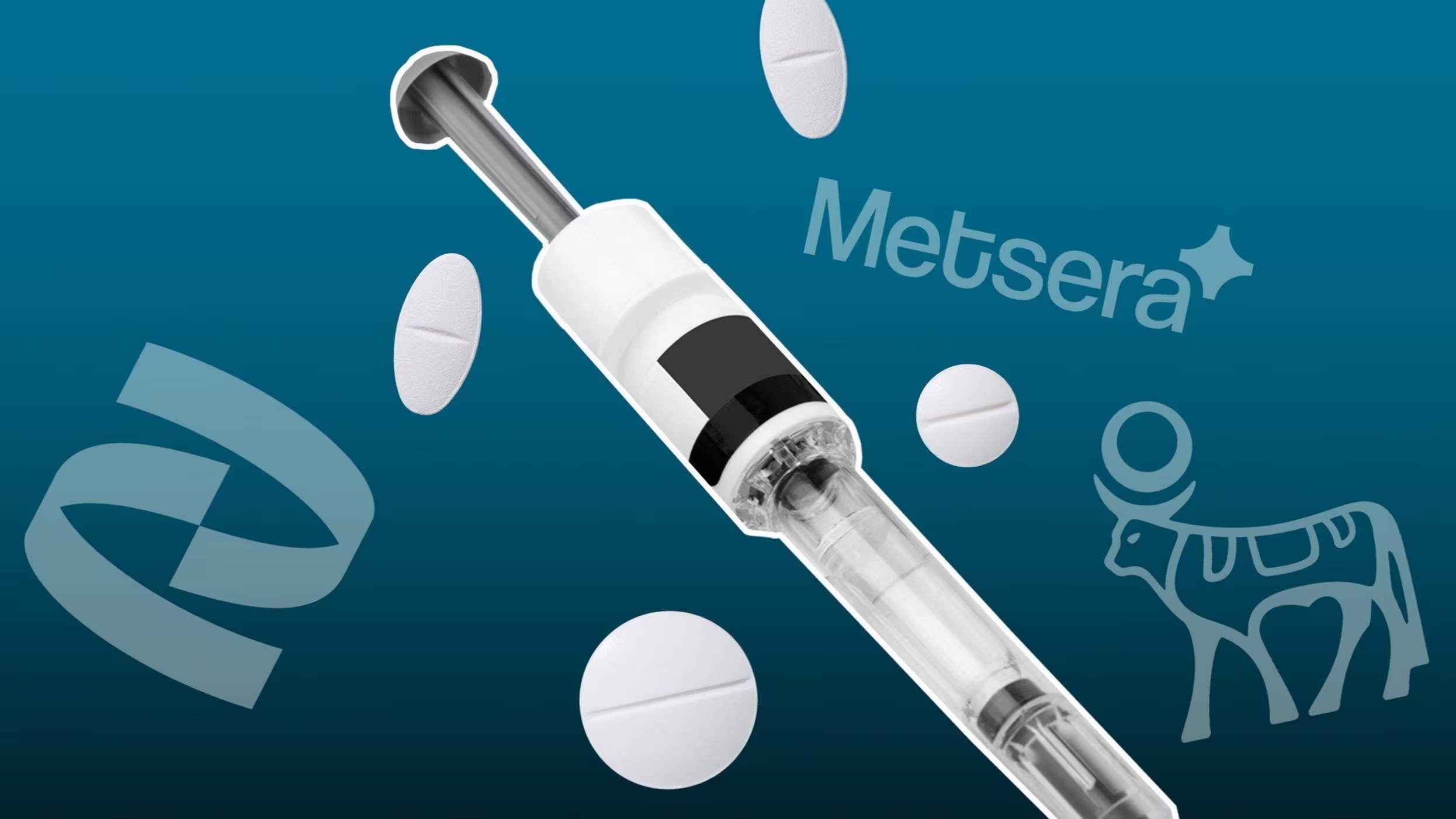Pfizer’s $10 Billion Bet: Acquiring Metsera to Dominate the Weight-Loss Market
The global race to capture the burgeoning market for obesity and diabetes treatments reached a fever pitch with the announcement that Pfizer has successfully acquired the clinical-stage biotech firm Metsera in a deal valued at approximately $10 billion. The acquisition, which followed a fierce bidding war, signals Pfizer’s aggressive commitment to challenging the dominance of pharmaceutical heavyweights like Novo Nordisk and Eli Lilly in the highly lucrative GLP-1 agonist space.
This massive investment underscores the pharmaceutical industry’s belief that the market for effective weight-loss therapies, currently spearheaded by drugs like Wegovy and Zepbound, is poised to become one of the largest drug categories in history, potentially exceeding $100 billion annually by the early 2030s. For Pfizer, the acquisition of Metsera is not merely an expansion; it is a critical strategic maneuver to secure next-generation assets and establish a commanding presence in this transformative therapeutic area.
The Anatomy of a $10 Billion Deal: What Metsera Brings to Pfizer
Metsera, a relatively young but highly sought-after startup, commanded a $10 billion valuation due to its promising pipeline of novel metabolic disorder treatments. Unlike many current market leaders that rely on injectable formulations, Metsera’s primary value lies in its development of oral, small-molecule therapies designed to offer superior patient convenience and potentially improved efficacy profiles.
Metsera’s Core Pipeline Assets
The centerpiece of the acquisition is Metsera’s lead compound, a dual GLP-1/GIP receptor agonist currently progressing through late-stage clinical trials. This class of drug is designed to mimic the action of natural gut hormones that regulate appetite, satiety, and insulin secretion. The dual-agonist approach is seen as the next evolution beyond single-target GLP-1 drugs, aiming for greater weight reduction and improved glycemic control.
Key features of Metsera’s pipeline that justified the intense bidding and high price tag include:
- Oral Bioavailability: Developing a highly effective oral formulation is the holy grail of the weight-loss market, as it significantly improves patient adherence compared to weekly injections.
- Novel Mechanism: The potential for Metsera’s compounds to target multiple metabolic pathways simultaneously, offering a differentiated profile from existing competitors.
- Phase 2 Data: Strong, compelling data from Phase 2 trials demonstrating significant weight loss percentages and a manageable safety profile, giving Pfizer confidence in the drug’s commercial viability and speed to market.

The Bidding War Context
The $10 billion price tag reflects the scarcity of high-quality, late-stage assets in the metabolic space that are not already owned by the major players. The Financial Times reported that the bidding war involved several other major pharmaceutical companies eager to avoid being left behind in the obesity market gold rush. Pfizer’s willingness to pay a premium—likely a significant multiple of Metsera’s pre-clinical valuation—demonstrates the urgency with which established pharma companies view the need to secure a foothold in this sector.
This valuation places Metsera among the most expensive biotech acquisitions focused purely on metabolic disorders in recent history, signaling a new benchmark for M&A activity driven by the obesity epidemic.
Pfizer’s Strategic Imperative: Catching Up in the GLP-1 Race
Pfizer’s move is a direct response to the extraordinary commercial success achieved by Novo Nordisk (with semaglutide, marketed as Ozempic and Wegovy) and Eli Lilly (with tirzepatide, marketed as Mounjaro and Zepbound). These companies have established a commanding lead, and Pfizer has faced challenges with its own internal development programs.
Previous Setbacks and the Need for a Fast Track
Pfizer has previously invested heavily in its own oral GLP-1 candidate, danuglipron. However, development efforts faced hurdles, including concerns over dosing frequency and gastrointestinal side effects, leading the company to adjust its strategy and timeline. The acquisition of Metsera provides Pfizer with a crucial Plan B—a de-risked, late-stage asset that can potentially leapfrog its internal programs and accelerate its market entry.
“The acquisition of Metsera is a clear signal that Pfizer is prioritizing speed and proven efficacy over internal development timelines in the metabolic space,” commented a leading industry analyst. “They cannot afford to wait five years while their competitors establish global monopolies.”
The Shift to Next-Generation Therapies
The market is rapidly evolving beyond simple GLP-1 monotherapies. The future is increasingly focused on multi-agonists (like Metsera’s dual GLP-1/GIP) and triple-agonists, which promise even greater weight loss and potential cardiovascular benefits. By acquiring Metsera, Pfizer gains immediate access to this next wave of innovation, positioning itself to compete not just with today’s market leaders, but with the products Novo Nordisk and Eli Lilly are currently developing for the future.

Industry Implications and Competitive Landscape
This acquisition fundamentally reshapes the competitive dynamics of the metabolic drug industry. It confirms that the era of the $10 billion-plus biotech deal is back, driven by the unprecedented commercial opportunity presented by obesity.
Pressure on Novo Nordisk and Eli Lilly
While Novo Nordisk and Eli Lilly currently control the vast majority of the market share, Pfizer’s move introduces a powerful, well-capitalized third player with a compelling, differentiated pipeline. The competition will now shift from who has the best injectable to who can deliver the most effective, safest, and most convenient oral therapy.
| Company | Key Market Position | Primary Assets | Strategic Focus Post-2025 |
|---|---|---|---|
| Novo Nordisk | Market Leader (Injectable) | Wegovy (Semaglutide) | Expanding indications, oral formulation refinement |
| Eli Lilly | Strong Challenger (Dual Agonist) | Zepbound (Tirzepatide) | Triple agonists, cardiovascular outcome trials |
| Pfizer (via Metsera) | Aggressive New Entrant (Oral Focus) | Metsera’s Dual Agonist Pipeline | Rapid commercialization of oral therapies, global distribution |
The Financial and R&D Impact
For Pfizer, integrating Metsera’s assets means taking on the significant cost and risk associated with late-stage clinical trials and subsequent manufacturing scale-up. However, the potential return on investment is enormous. If Metsera’s lead drug achieves regulatory approval and captures even a modest share of the projected $100 billion market, the $10 billion investment will be quickly recouped.
Furthermore, the deal validates the business model of specialized biotechs like Metsera, demonstrating that focused research in high-demand therapeutic areas can lead to massive payouts, fueling further investment in early-stage metabolic research across the industry.
Key Takeaways for the Reader
Pfizer’s acquisition of Metsera is one of the most significant pharmaceutical deals of 2025, driven entirely by the global demand for effective weight-loss solutions. Here are the critical points:
- The Price: Pfizer paid approximately $10 billion for Metsera, reflecting the intense competition and immense potential of the obesity drug market.
- The Asset: Pfizer gains a highly promising, late-stage pipeline, specifically focusing on oral, dual GLP-1/GIP agonists, which are considered the next generation of metabolic treatments.
- The Strategy: The acquisition is a rapid, high-stakes move by Pfizer to catch up to market leaders Novo Nordisk and Eli Lilly, securing a differentiated product that offers the convenience of a pill.
- Market Impact: The deal confirms the long-term projection of the obesity market as a multi-billion-dollar sector, guaranteeing increased competition and innovation in the coming years.
Conclusion: The New Era of Metabolic Competition
Pfizer’s successful bid for Metsera marks a turning point in the pharmaceutical industry’s focus on metabolic health. By committing $10 billion to secure cutting-edge oral therapies, Pfizer has signaled its intent to be a major force in a market that is fundamentally changing how chronic diseases like obesity and Type 2 diabetes are treated.
This move ensures that the competitive landscape will remain dynamic and highly innovative. For patients, the increased competition promises a faster introduction of more convenient and potentially more effective treatment options, moving beyond weekly injections toward daily oral pills. The integration of Metsera’s science into Pfizer’s global commercial engine sets the stage for a dramatic market confrontation in the latter half of the decade.
What’s Next: Clinical Trials and Commercialization
Pfizer’s immediate focus will be on accelerating the Phase 3 clinical trials for Metsera’s lead candidates. Given the urgency of the market, analysts expect Pfizer to dedicate substantial resources to fast-track regulatory submissions. The timeline for potential regulatory approval and commercial launch of the first Metsera-derived drug is projected to be in the late 2027 or early 2028 timeframe, setting up a direct confrontation with the established injectable therapies and the emerging oral candidates from competitors.
Original author: Oliver Barnes
Originally published: November 8, 2025
Editorial note: Our team reviewed and enhanced this coverage with AI-assisted tools and human editing to add helpful context while preserving verified facts and quotations from the original source.
We encourage you to consult the publisher above for the complete report and to reach out if you spot inaccuracies or compliance concerns.

